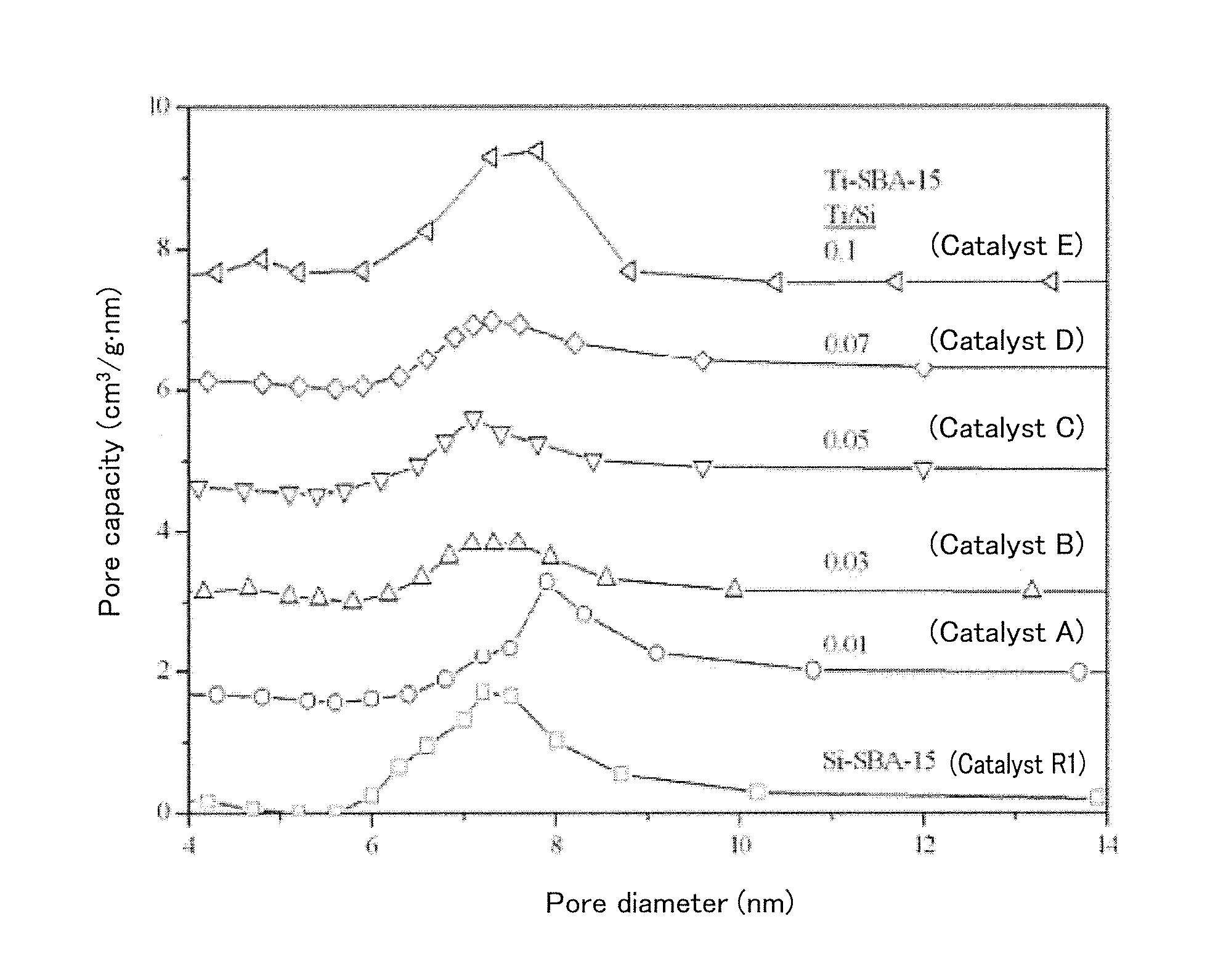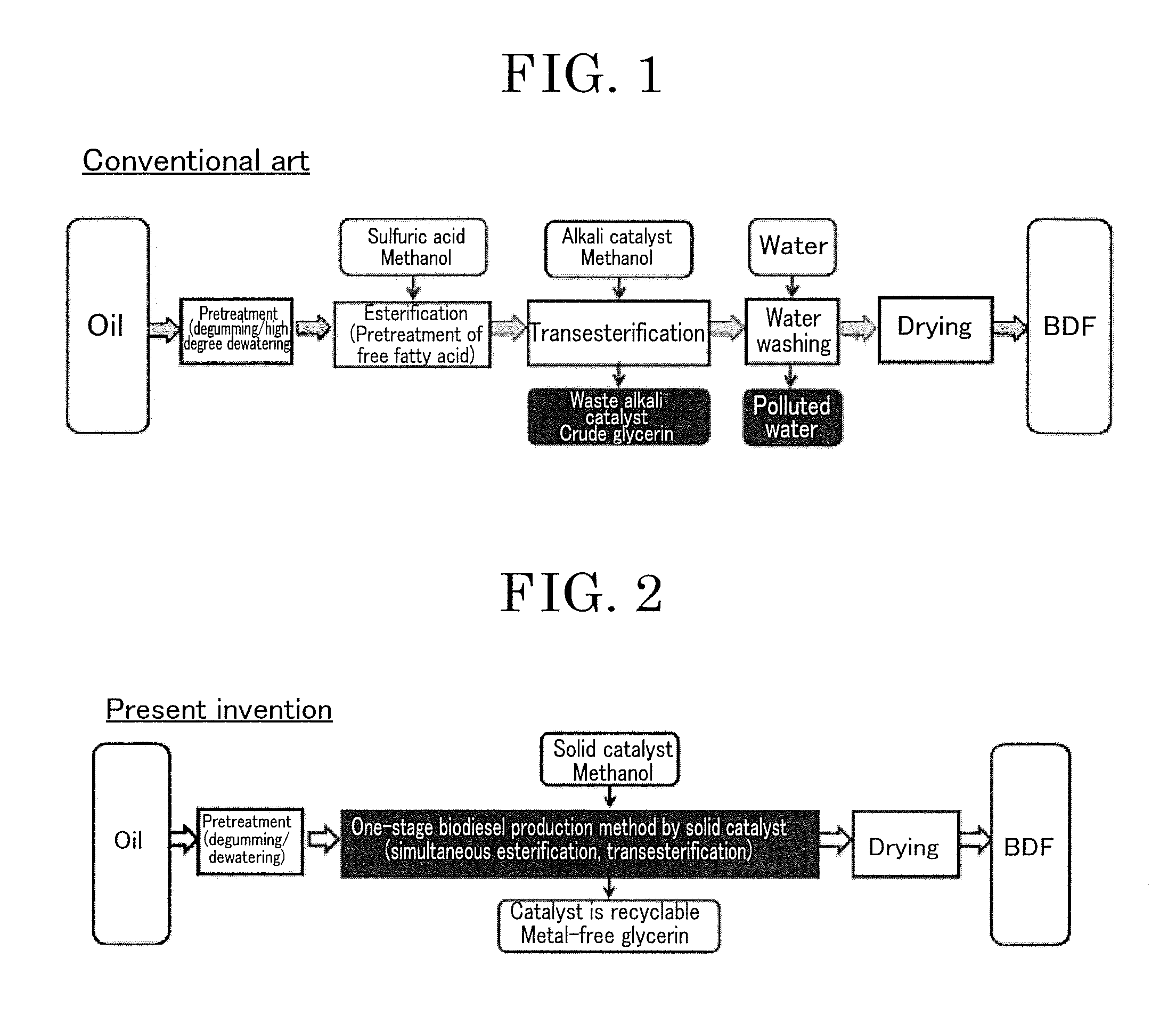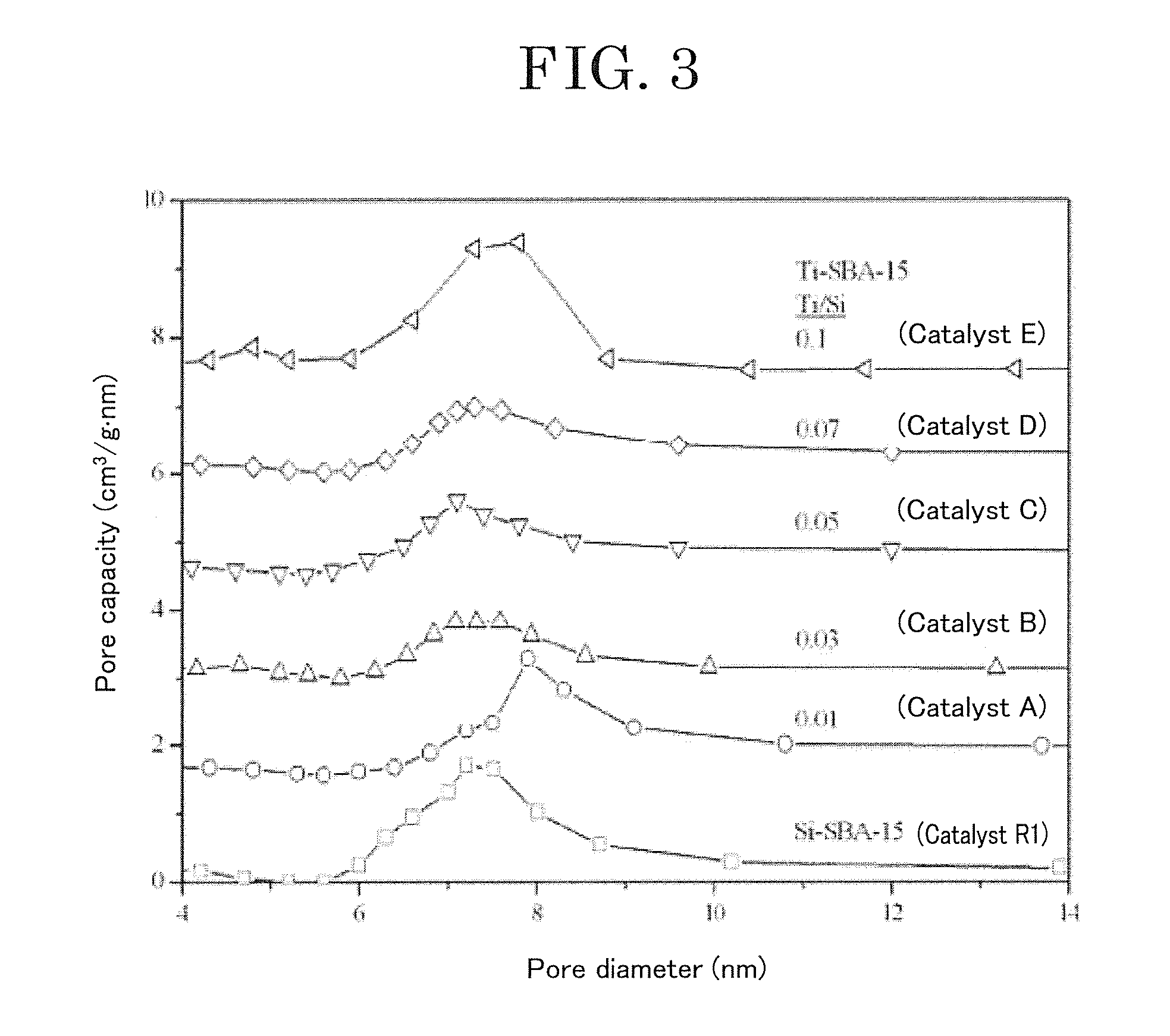Transesterification Catalyst and Method for Producing Biodiesel Fuel Using Transesterification Catalyst
a technology of transesterification catalyst and biodiesel fuel, which is applied in the direction of physical/chemical process catalyst, fatty acid chemical modification, sustainable manufacturing/processing, etc., can solve the problems of catalyst corroding production equipment, not easy to produce biodiesel fuel, and a lot of waste catalyst, etc., to achieve efficient transesterification, high yield, and high yield
- Summary
- Abstract
- Description
- Claims
- Application Information
AI Technical Summary
Benefits of technology
Problems solved by technology
Method used
Image
Examples
example 1
Preparation and Physical Property Analysis of Catalysts A to E
(1) Preparation of Titanium Precursor
[0067]While being stirred vigorously, 14.8 g (0.052 mol) of titanium tetraisopropoxide (TTIP) was added slowly to a 12.7 g (0.13 mol) of a concentrated hydrochloric acid (12 M) in a 50-mL beaker at 0° C. At the time, the HCl / TTIP molar ratio was maintained at 2.5. A titanium oxychloride precursor obtained according to this preparation method was a transparent yellow solution, in which no precipitate was observed at all.
(2) Preparation of Catalyst
[0068]In a 250-mL polypropylene-made bottle, 3 g of a triblock copolymer PLURONIC P123 (manufactured by Sigma-Aldrich Co., LLC., Mn=5800) and 2.36 g of a common salt were dissolved in 160 g of distilled water at 35° C. to 40° C. 8.4 g of ethyl orthosilicate (TEOS) was added to the resulting solution, stirred for 4 hours, and hydrolyzed in advance. Then, 0.213 g to 2.13 g of titanium oxychloride (from 1 mol % to 10 mol % relative to silicon) pre...
example 2
Preparation and Physical Property Analysis of Catalysts F and G
(1) Preparation of Titanium Precursors
[0073]Titanium oxychloride precursors were prepared in the same manner as in Example 1 except that the amount of a concentrated hydrochloric acid was changed to 7.65 g (0.078 mol) or 153 g (1.55 mol) (HCl / TTIP molar ratio=1.5 and 30). The obtained titanium oxychloride precursors were transparent yellow solutions, in which no precipitate was observed.
(2) Preparation of Catalysts
[0074]Catalysts F and G were prepared in the same manner as in Example 1, except that the titanium oxychloride precursors prepared in Example 2 (1) were used, and the Ti / Si molar ratio in the gel was adjusted to 0.03. Here, the gel composition was P123:silicon:titanium:HCl:NaCl:water=0.013:1:0.03:0.045 or 0.90:1:220.
(3) Measurement of Physical Properties of Catalysts
[0075]From powder X-ray diffraction patterns, the catalysts F and G had a regular two-dimensional hexagonal p6 mm structure. Structural properties ...
example 3
Preparation and Physical Property Analysis of Catalysts H and I
(1) Preparation of Titanium Precursors
[0076]Titanium oxychloride precursors were prepared in the same manner as in Example 1.
(2) Preparation of Catalysts
[0077]Catalysts H and I were prepared in the same manner as in Example 1, except that in the gel, the Ti / Si molar ratio was changed to 0.03, and the NaCl / TEOS molar ratio was changed to 0 or 6. Here, the gel composition was P123:silicon:titanium:HCl:NaCl:water=0.013:1:0.03:0.075:0 or 6:220.
(3) Measurement of Physical Properties of Catalysts
[0078]From powder X-ray diffraction patterns, the catalyst H had a two-dimensional hexagonal p6 mm structure, whereas the catalyst I had an irregular pore structure. Structural properties of the catalysts measured by nitrogen adsorption are shown in Table 3. The catalysts H and I had a large specific surface area (from 446 m2 / g to 716 m2 / g), a large pore capacity (from 0.53 cm3 / g to 0.68 cm3 / g), and controlled mesopores (7.4 nm). The t...
PUM
| Property | Measurement | Unit |
|---|---|---|
| pore diameter | aaaaa | aaaaa |
| pore diameter | aaaaa | aaaaa |
| molar ratio | aaaaa | aaaaa |
Abstract
Description
Claims
Application Information
 Login to View More
Login to View More - R&D
- Intellectual Property
- Life Sciences
- Materials
- Tech Scout
- Unparalleled Data Quality
- Higher Quality Content
- 60% Fewer Hallucinations
Browse by: Latest US Patents, China's latest patents, Technical Efficacy Thesaurus, Application Domain, Technology Topic, Popular Technical Reports.
© 2025 PatSnap. All rights reserved.Legal|Privacy policy|Modern Slavery Act Transparency Statement|Sitemap|About US| Contact US: help@patsnap.com



